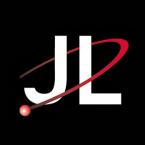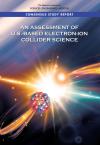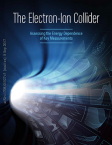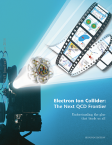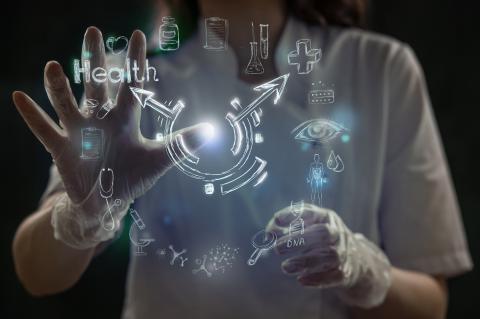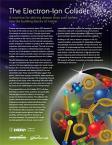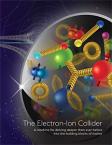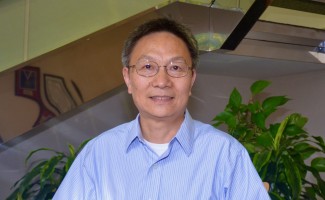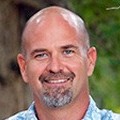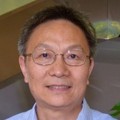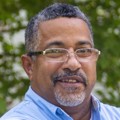For theory group head, successful research and leadership comes from finding and keeping the right balance
Jianwei Qiu has very full days managing his responsibilities at the lab. As Jefferson Lab’s associate director for theoretical and computational physics, most of his days are filled to the brim by attending meetings, reviewing papers and serving on the national and international advisory and review committees for funding agencies and various science programs.
So, when asked what he does when he’s not at work, Qiu laughs, “My physics research! I only have a small percentage of my time at the lab to do my physics research during the workday. Because my daytime schedules are mostly filled with management and collaboration activities, I often work extra-long hours beyond the 8-hour per day to carry out my commitment to or my role in research projects, take care of my responsibility as a PI and co-spokesperson of the TMD collaboration, one of the Department of Energy-supported topical nuclear theory collaborations, and to keep up with the forefront of the nuclear theory development.”
Qiu is well-versed in finding ways to balance his research and his managerial commitments. Prior to joining the lab in 2016, he was a senior scientist and nuclear theory group leader at Brookhaven Laboratory. Prior to that, he was a professor of physics and astronomy at Iowa State University. He received his Ph.D. in theoretical physics from Columbia University in 1987.
His experience has taught him that it’s important to not only lead his team as a manager, but also to set a positive example with the work he does in research by continuing to collaborate and contribute as a theoretical nuclear physicist.
“My own research enables me to better lead the Theory Center, to lead our collaboration, to provide good guidance to our junior researchers on the team, and to provide valuable input to the advisory and review committees that I serve,” he says.
A time apart
For Qiu, the idea of finding balance carries through beyond just how he spends his time, it’s also embedded in how he approaches his work.
On those rare days when his schedule isn’t jam-packed with meetings and managerial tasks, Qiu relishes being able to close his computer communications apps, sit in his quiet office and just think.
This may come as a surprise to anyone who thinks that the director for computational physics of one of the most advanced nuclear physics research facilities in the world works on a computer all day.
“Often, I have to stay away from the distractions of computer apps to focus on complex and demanding theoretical work,” Qiu explains. “I promise my colleagues that although I may not be able to reply to every email instantly, I will respond all emails or requests at least three times per day.”
Combining classic theory research with ground-breaking technology
Qiu also emphasizes that this balance extends to research collaborations. Theorists no longer focus on just one approach to get the job done.
"Theory work for Jefferson Lab physics is extremely complex, and such work typically needs a collaboration of multiple people,” he says. “These days, the problems are so complex that there is not one person who can do everything, so I collaborate with people who have expertise in other areas. With these collaborations, I often focus on analytical derivation and reliability of proposed theories.”
Those derivations feed in to computations that Qiu and his collaborators can carry out with the lab’s in-house supercomputers or the Summit supercomputer located at the Oak Ridge National Laboratory (ORNL) in Tennessee. According to ORNL, Summit can perform 200,000 trillion calculations per second, making it the most powerful and fastest scientific supercomputer in the world.
“Even in current era of advanced computing, we need to teach computers what to calculate or simulate, based on our theoretical understanding of the physics problems, our derived formulas and modeling. Advanced computational technology opened a new possibility for us to explore and tackle new and harder physics problems, involving much larger datasets and more complex structure that might be impossible to handle without modern computing capacity,” he says.
Balancing many projects to advance one goal
While he works on various theory projects simultaneously that are relevant to experiments at JLab and worldwide, one of the overarching goals of these efforts is to understand with greater clarity what is happening at the subatomic level inside matter. There, nuclear physicists are exploring both what particles can exist and what they can discover inside the most common particles.
“The goal of Hall D at the lab is essentially to discover new particles. In Halls A, B and C, we are trying to understand what is happening inside the proton and neutron, the fundamental building blocks of our visible world. We’re trying to develop theoretically reliable and experimentally feasible tomography tools that will enable us to map out what is going on inside nuclear particles—similar to how a CT scan might be used at a hospital to understand what is going on inside a body. With the tomography at this scale, called nuclear femtography, we can see the images of quarks and gluons and track their movements,” Qiu explains.
The data generated through the Jefferson Lab’s experiments are then collected, processed through supercomputers and compared with data gathered by physicists at other labs worldwide.
“Eventually, you extract the functions encoding internal structure of individual particles, and you can fit all the measurements you have from all the labs. This must be completely universal no matter where you measure it,” he explains. “We use global analysis, and we take data from all over the world to be sure what we’re seeing in our experiments is universal.”
By Carrie Rogers





